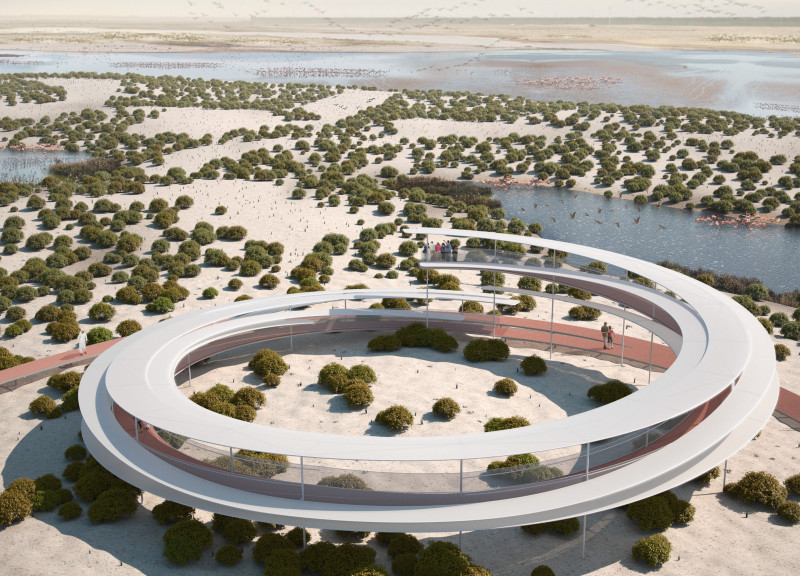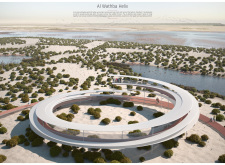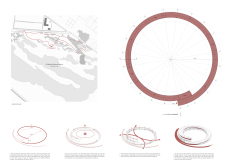5 key facts about this project
The Al Wathba Helix is located in the Al Wathba Wetlands Reserve and aims to encourage harmony between people and wildlife. This project highlights the need to protect natural habitats while allowing visitors to enjoy the beauty of the landscape. The design features a continuous ramp that ascends to a height of six meters. This ramp offers panoramic views of the wetlands while keeping the building's footprint small.
Design Concept
The Helix moves away from the typical structure of observation towers that usually rely on stairs. Instead, it has a single ramp with various observation points spread along its length. The total area of 280.2 m² is designed for interaction with the environment. The ramp includes four landings spaced every 1.5 meters, making it accessible for individuals using wheelchairs.
Environmental Considerations
A primary focus of the Helix is its environmental impact. The design aims to minimize interference with the natural paths of local plants and animals. Species such as the spiny-tailed lizard can move freely beneath the structure. This careful planning shows a commitment to creating a space that works in harmony with its surroundings.
Roof Design
The roof features five sections: a main roof and inner and outer circle roofs, all designed to provide shade. The shape of the roof takes inspiration from natural forms, resembling a flamingo or a bird's nest. This design choice helps connect the structure to the landscape, reinforcing the intent of blending architecture with nature.
Materials Used
The Helix is built primarily from steel, chosen for its durability in the tropical dry climate. The roofs are covered in PTFE fabric, a lightweight, translucent material that offers shade. The walkways are made of Eco steel grating, selected for its strength and longevity. This modular approach to construction simplifies assembly and maintenance, especially in areas where the walkway must rise over water or rough terrain.
The design of the Al Wathba Helix encourages visitors to connect with the environment while respecting the local ecosystem. Its thoughtful design and careful material choices contribute to an experience that highlights the natural beauty of the wetlands.






















































